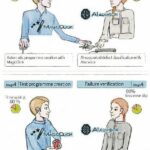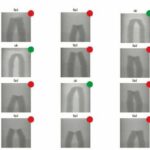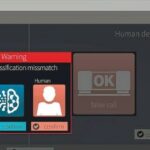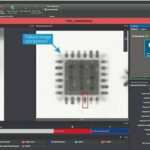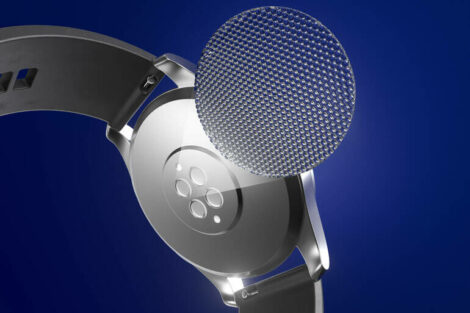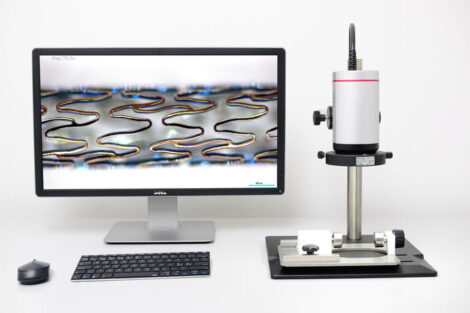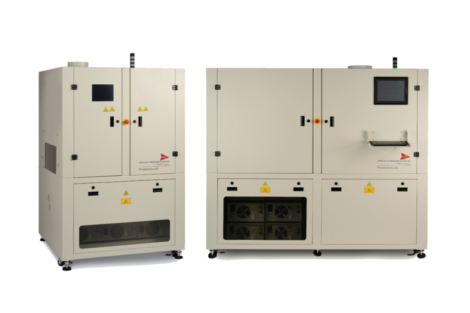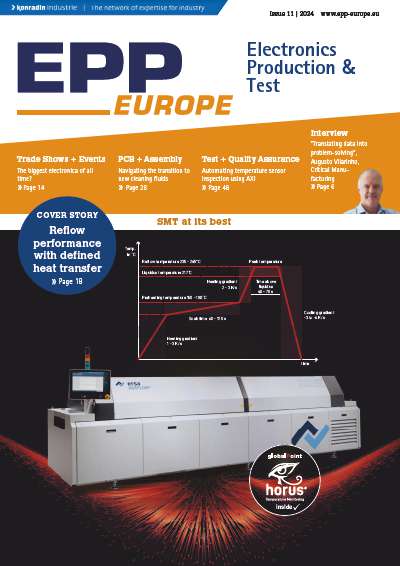Historically, there have been several technological paradigm shifts in the field of AOI and AXI systems,” says Andreas Tuerk, product manager for X-ray systems at Goepel electronic. First, AOIs employed orthogonal cameras with illumination variants. Then oblique cameras and more sophisticated illumination of different wavelengths and directions were added. After that, 3D imaging technology was integrated to evaluate solder joints even more reliably. AXI systems have undergone a comparable trajectory. The vertical (2D) and oblique (2.5D) radiography of an assembly, mostly with analogue image intensifiers, gradually developed into 3D X-ray systems for solder joint inspection across several layers. The advent of 64-bit technology and powerful digital x-ray detectors then made AXI fast enough to use in the production line. “Until now, any fundamental changes in inspection technologies have been hardware related,” Tuerk explains. “The next paradigm shift will be in the area of software. And artificial intelligence will be the driver.”
Saving costs and personnel
In addition to machinery acquisition and maintenance costs, personnel costs have the biggest impact on the price of inspection processes. In addition to personnel to classify abnormalities at the verification station, experts are required for the creation of inspection programmes. In this area, AI can reduce human effort and save money. A clear trend for customisation is evident among electronics manufacturers across the world – small batch sizes need to be produced and inspected quickly and, of course, cost-effectively. In this case, an inspection programme that works from the first assembly can be created in just a few clicks using various assistance functions. Thanks to artificial intelligence, this will be achievable without the intervention of an employee in the future – contributing significantly to a reduction in inspection costs for very small batches.
The future of programme creation
Artificial intelligence has been used in Goepel inspection systems for several years. The time employees require to conduct various processes is already being reduced. Step by step, beginning with the semi-automation of processes, we are moving towards the final goal – fully automated,
autonomous inspection.
In the past, inspection programmes began with data import. Article numbers were manually assigned to existing library entries. Finally, the test parameters were manually adjusted. All of this was time-consuming. Nowadays, this process looks a little different – although automated programme creation still starts with data import. Component parameters (name, position, article number, and so on), layout and pad information are now readily available but detailed information about the housing and the solder joint (dimensions, height, pin shape) is still missing. To obtain this, the 3D AOI system creates an exact image of the respective housing and solder joints using the first produced assembly. This information is then used to determine the respective enclosure shape and to assign all required test functions. The test programme is created and a component library is automatically generated based on article numbers. In the final stage, the test programme is executed and the test parameters are automatically adapted to the real process variations. To avoid slippage, tolerance limits are placed tightly around the actual measured values and corrected according to real fluctuations, taking plausibility criteria into account. This is called knowledge-based intelligence. In the future, it will be possible to create a test programme without the real image of the first assembly. A completely digital image of the PCB with components and solder joints – a digital twin – will be used in the creation of a new test programme without the need for an actual physical assembly.
“There are already AI inspection functions that do not require any setting parameters because they use a pre-trained AI model for classification,” explains Tuerk. Examples of this include the x-ray inspection of prismatic battery cells for foreign objects or the AXI inspection of sheath thermocouples directly in the production line. As a human being, you often see certain defect features quickly – but the machine needs an expert who has mastered the parameterisation of an inspection function in order to be able to evaluate a feature correctly. This is where AI can help. The AI system is trained using example images. This results in an AI model that carries out the evaluation without any setting parameters. This is exemplified in the evaluation of welded joints on sheath thermocouples.
Further AI applications are in the works. In x-ray inspection, AI solutions for void detection, BGA head-in-pillow detection and short-circuit control are already being developed. AI approaches are emerging in predictive maintenance and for the analysis of results data from inspection systems across the whole SMT line. “There’s a long way to go before we achieve fully-automated inspection but we shouldn‘t forget how far we’ve come,” says Tuerk.
AI at the verification station
AI is not only saving human resources in the creation of inspection programmes. There is also the potential to save time and money at verification and repair stations. Goepel electronic relies upon the AI advisor software module for this purpose. Based on pre-trained models, the AI advisor makes its own decision for each anomaly found by the inspection system. The AI‘s decision is based on the verification decisions made by humans in comparable cases in the past. Now there are different options for deploying AI decision-making. Anomalies that are classified with high confidence as pseudo errors can be evaluated directly by the AI – without human intervention. This saves time. The AI advisor can also warn us about whether a human error could lead to a so-called human slip. If an operator incorrectly classifies a real error as a pseudo error, the user is asked to reconsider his decision. Especially in the case of X-ray images – where error interpretation is often more demanding – the AI advisor can be a welcome aid. Its functionality is constantly being expanded with the aim of a fully autonomous classification of all abnormalities found.
Trust is good – control is better!
“Often there is still a sense of unease about the use of artificial intelligence in the field of inspection systems” notes Tuerk. “Why did the AI decide one way and not another? Will the AI find previously discovered defects even after it has been trained with new image samples? These are all legitimate questions. Luckily we already have some answers. The AI must be trustworthy – decisions must be comprehensible. With this in mind, Goepel electronic is working on ‘Comprehensible AI’ to increase trust and acceptance. We shouldn’t forget AI is only as good as the human who trained it, and this depends entirely on data selection, its completeness and consistently correct labelling and categorisation,” says Tuerk.
There may still be some way to go before we achieve fully-autonomous inspection but, thanks to AI, the next paradigm shift is already well underway.
Productronica, Booth A2.239




